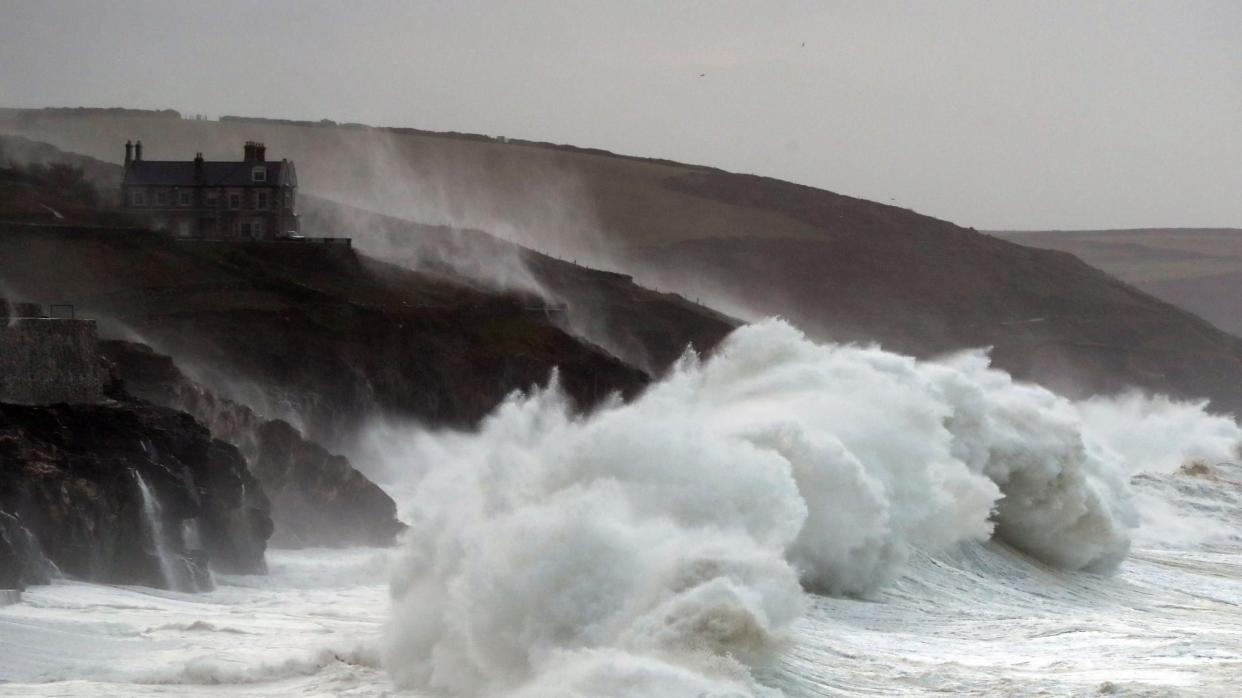Storm Eleanor to hit the UK: When and where to expect severe gales

The fifth storm of the season and the first of 2018 has been named as Storm Eleanor — and it’s set to bring severe gales of up to 80 mph to parts of the UK.
Low-pressure systems continuing to move across the UK from the Atlantic will bring wet and windy weather this week.
When will Storm Eleanor arrive?
The storm will hit British shores on Tuesday evening, going into Wednesday, producing strong and even severe gales.
Paul Gundersen, Met Office chief forecaster, said: “The wind will pick up later on Tuesday and Wednesday as developing Storm Eleanor heads towards the UK and Ireland.
“It will bring a very windy spell to the UK on Tuesday night and Wednesday with gales or severe gales in places and National Severe Weather Warnings have been issued as there is the potential for some travel disruption, and high waves throwing beach material on to sea fronts, roads and coastal properties, along western and southern coasts.”
Where will be worst affected?
Northern Ireland will be the first region hit by Storm Eleanor, and is covered in a yellow weather warning for wind, which is in place from 6pm tonight. Heavy rain may also result in localised flooding.
The Met Office said that Wednesday daytime will be very blustery, with gusts of 60-70 mph along exposed coasts. More exposed locations will see gusts of close to 80 mph. Inland gusts exceeding 60 mph are possible.
Wind will also lash Scotland on Tuesday evening and Wednesday. The Met Office added that there is a “small chance that injuries and danger to life could occur from large waves and beach material being thrown onto seafronts, roads and coastal properties.”
#StormEleanor has officially been named by @MetEireann. Eleanor will track across parts of Ireland Tuesday Evening but will then bring strong winds across parts of the UK through into Wednesday pic.twitter.com/m8zYKu1YDd
— Met Office (@metoffice) January 1, 2018
Strong winds will also batter the north of England, where there is also the chance of snowfall in parts. There will be severe gales in Wales and strong or severe gales in the West Midlands and South West of England.
The Environment Agency warned that strong winds and high tides could bring coastal flooding from Tuesday until Thursday.
Carol Halt, the agency’s flood duty manager, said: “We urge people to stay safe on the coast – take extreme care on coastal paths and promenades, and don’t put yourself in unnecessary danger trying to take ‘storm selfies’.”
Why are storms named?
In 2015, the Met Office and Met Eireann (in Ireland) began to name severe storms in the same way that hurricanes are named. Previously storms were often given unofficial names by the press, which led to confusion. By giving storms a uniform name, it is easier to calibrate responses and communications.
So far this season there have been five named storms: Aileen, Brian, Caroline Dylan and Eleanor, plus Ex-Hurricane Ophelia.

 Yahoo News
Yahoo News 

